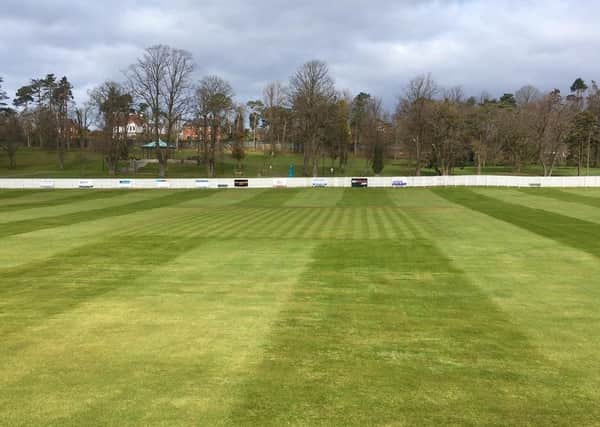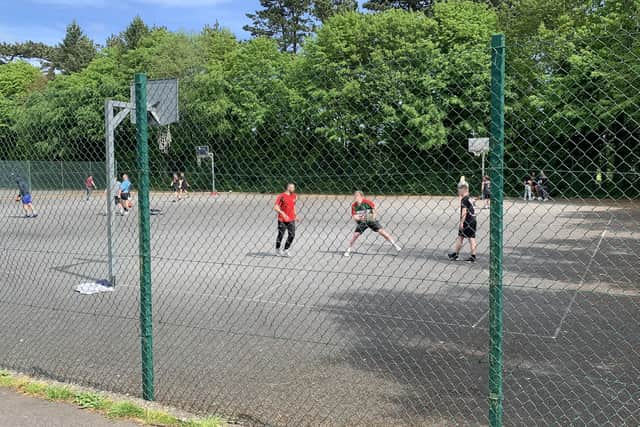Alistair Bushe: For sake of the local game’s future, some cricket is needed in 2020


The Covid-19 pandemic could barely have come at a worse time for a minority sport with such a small window of participation. With a climate that simply can’t host cricket for any more than a handful of months each year, there remains a distinct possibility that there will be no competitive cricket on the island of Ireland this summer.
That said, the mixed messages from government and health experts have at different times sent hopes soaring and plummeting.
Advertisement
Hide AdAdvertisement
Hide AdBehind the scenes in the NCU, administrators have already been striving to implement plans that could see a return to training and eventually competitive matches.


There was a fresh development on Sunday as the NCU confirmed that Cricket Ireland has made a submission to both Sport Ireland and Sport NI regarding a return-to-training for cricket across Northern Ireland and the Republic in Phase 2/Step 2 of the respective government roadmaps to reopening.
As the picture on this page shows, groups of people can now meet up outside and play sport unofficially. However, it is to be much more difficult for clubs and protocols will have be followed to the letter.
However, there is some hope.
Last week Sir Jeremy Farrar, a member of the government’s Scientific Advisory Group for Emergencies (Sage), told The Cricketer magazine that cricket’s more distanced set-up gives it a decent chance of making a comeback in the next two months.
Advertisement
Hide AdAdvertisement
Hide AdSir Jeremy said while big crowds will not return at sporting events in the UK this year (not a problem for local cricket let’s be honest), recreational cricket before autumn was feasible.
“If you take a cricket game and think sensibly, how can we still have a game which respects some of the physical-distancing measures that make sense, hand-washing between overs, not spitting on the ball, using umpires from teams to reduce the number of people, changing at home?” he said. “You can come up logically with a plan in the context of physical distancing which wouldn’t ruin the game.”
Sir Jeremy is right. Fielders can easily maintain a two-metre distance from one another and while it might be difficult to enforce a distance between a wicketkeeper and a batsman when a slow bowler is operating, it might be necessary for wicketkeepers to stand back at all times. Hardly ideal, but better that than no game at all.
Umpiring could be more problematic. They could easily keep their distance at square leg, but the bowler’s end it will be more tricky. Masks may be necessary.
Advertisement
Hide AdAdvertisement
Hide AdDressing rooms will probably remain out of bounds, so could tea and bar areas, but none of these restrictions necessarily sound the death knell for cricket in 2021.
The space around cricket grounds means social distancing should be easy to achieve for spectators. However, the age profile of many of those watching cricket puts them in the vulnerable category, and many rightfully will choose to stay away until the climate is safer.
If there is no cricket, the impact will be disastrous, especially at youth level where the game is fighting for the attention of the younger generation for whom other sports might seem much more attractive.
Andy Rose of Instonians says club should attempt to liaise with their youth, even as club premises remain out of bounds.
Advertisement
Hide AdAdvertisement
Hide Ad“The risk is that clubs who don’t engage will struggle,” he said. “Cricket, rugby hockey, football will all be fighting to get kids playing their own sport when lockdown relaxes.”
The Shaw’s Bridge outfit had agreed to bring in Steve Krugar, a level 3 coach from South Africa to lead coaching at youth level at the club and RBAI, but coronavirus has put paid to that. It’s highly unlikely we will see any overseas players or coaches on our shores in 20020.
Rose said: “It’s disappointing but understandable considering what is going on in the world. We’re engaging with our youth with Zoom and Google Classroom. We have one to one coaching available via Zoom with Shane Getkate. I’ve offered free feedback and coaching on any video clip sent in to me via WhatsApp.”
Other clubs are more pessimistic, not only about the prospect of competitive cricket, but also about holding substantial youth coaching sessions.
Advertisement
Hide AdAdvertisement
Hide Ad“We might see some youth camps in August if the guidance permits, but our youth sessions are heavily loaded towards April, May and June. At least half the kids disappear in July,” said one club figure.
With clubs required to appoint their own Covid-19 officer and enforce strict social distancing measures at all times, there might be too much for clubs with limited resources to take on. However, their futures might depend on giving it their very best shot.